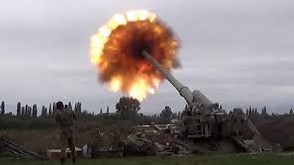The Armenia-Azerbaijan conflict, a deeply rooted and complex struggle over territory, national identity, and regional dominance, has long plagued the South Caucasus. Primarily centered on the disputed Nagorno-Karabakh region, this conflict has led to several full-scale wars, deadly skirmishes, and a humanitarian crisis affecting countless lives on both sides. The latest escalation brought renewed international attention to the unresolved tensions, and its impacts continue to reshape both countries and the wider region.
Historical Background and the Roots of Conflict
The Armenia-Azerbaijan conflict dates back to the early 20th century when Nagorno-Karabakh, a region with a predominantly ethnic Armenian population, was incorporated into Soviet Azerbaijan by the USSR. Both Armenia and Azerbaijan have since claimed historical ties to the area, with Armenia citing a majority Armenian population and historical control, and Azerbaijan asserting sovereignty based on recognized borders. When the Soviet Union collapsed in 1991, longstanding ethnic and nationalistic tensions boiled over, leading to the First Nagorno-Karabakh War from 1988 to 1994. By the war’s end, Armenia had established control over Nagorno-Karabakh and several adjacent areas, displacing hundreds of thousands of Azerbaijanis in the process.
The 1994 ceasefire established a fragile peace but left Nagorno-Karabakh as an unrecognized, self-declared republic backed by Armenia but internationally considered part of Azerbaijan. For decades, this uneasy stalemate led to periodic skirmishes along the border. Both countries built up their military capabilities, with Azerbaijan gaining a significant edge thanks to oil and gas revenue used to fund advanced weaponry.
The 2020 War: A New Chapter of Violence
In September 2020, the longstanding tension erupted into the Second Nagorno-Karabakh War, a six-week conflict with intense casualties on both sides. Azerbaijan launched a large-scale offensive to reclaim territories lost in the early 1990s, deploying advanced weaponry and sophisticated drones acquired from Turkey and Israel. Armenia, facing both logistical and technological disadvantages, struggled to hold back Azerbaijan’s advance. The war ended with a Russia-brokered ceasefire in November 2020, resulting in significant territorial gains for Azerbaijan and the deployment of Russian peacekeeping forces in the region.
The aftermath of the 2020 war altered the status quo dramatically. Azerbaijan regained control over several areas surrounding Nagorno-Karabakh, and while Armenia retained some control over the region itself, the war left many Armenians feeling insecure about the future. The ceasefire agreement also created a transport corridor between Azerbaijan and its enclave of Nakhchivan, through Armenian territory, adding another layer to the fragile peace.
Recent Escalations and the Humanitarian Impact
Tensions continued to simmer, and periodic clashes escalated into major confrontations. In 2022 and again in 2023, Armenia and Azerbaijan accused each other of provocations, troop buildups, and cross-border shelling, with each episode reigniting the fear of a full-scale conflict. Despite the presence of Russian peacekeepers, many of whom are now less engaged due to Russia’s commitments elsewhere, civilians remain caught in the crossfire, and the humanitarian toll grows.
The human cost has been immense: displacement, loss of livelihoods, and the psychological toll of living in conflict are prevalent, especially in Armenia, where Nagorno-Karabakh is seen as a symbol of national pride. In Azerbaijan, the government has invested in infrastructure projects and relocation efforts in reclaimed areas, seeking to transform the region, but remnants of the conflict—such as unexploded ordnance—pose constant risks.
Regional and International Implications
The Armenia-Azerbaijan conflict has significant implications for the geopolitics of the South Caucasus and beyond. Russia, which has historically played the role of mediator, finds its influence challenged by both Turkey and Western powers. Turkey, a close ally of Azerbaijan, provided critical support during the 2020 war, bolstering its influence in the region and signaling a shift in regional alliances. Conversely, Iran, which shares borders with both Armenia and Azerbaijan, is wary of the shifting power dynamics and the potential for a permanent Turkish-Azerbaijani corridor that could limit its access to Armenia.
Western countries have also taken a keen interest in the conflict. The United States and the European Union have intermittently engaged in mediation efforts, and the EU has deployed monitors to assess security conditions along the border. However, both Western and Russian-led diplomatic efforts have faced challenges due to the entrenched nature of the conflict and the vested interests of regional players.
Pathways to Peace: Challenges and Prospects
Achieving lasting peace in Nagorno-Karabakh remains a formidable challenge. Any peace process requires both Armenia and Azerbaijan to make significant concessions—a difficult proposition for two countries with deep-seated grievances and national pride tied to the conflict. Additionally, displaced populations on both sides, enduring pain from decades of violence, demand justice and acknowledgment of their suffering.
Continued negotiations, particularly through organizations like the OSCE Minsk Group, could provide a framework for dialogue, but recent geopolitical developments have reduced the group’s influence. The role of international peacekeepers and the possibility of a United Nations-led peace mission have been discussed, though both countries have reservations about external involvement.
The Armenia-Azerbaijan conflict over Nagorno-Karabakh remains one of the world’s most protracted and challenging territorial disputes. While diplomatic initiatives continue, the pathway to lasting peace is obscured by historical grievances, regional alliances, and the strategic interests of external powers. The future of Nagorno-Karabakh and the surrounding regions remains uncertain, with both sides preparing for peace but bracing for the possibility of renewed conflict.
As the region stands at a crossroads, the hope for a peaceful resolution endures, but it will require significant compromises, trust-building, and sustained international commitment to bring about stability for the people of Armenia, Azerbaijan, and Nagorno-Karabakh.




Photos are collected from respective sources